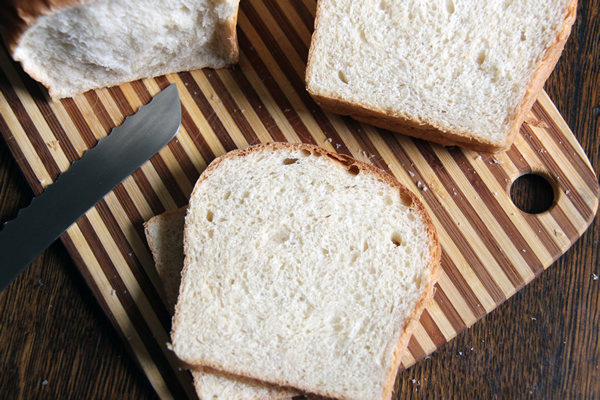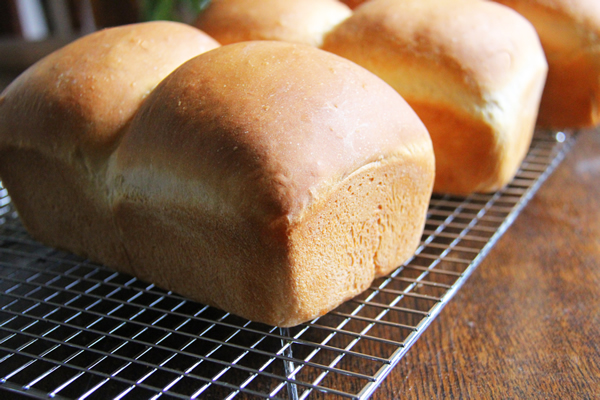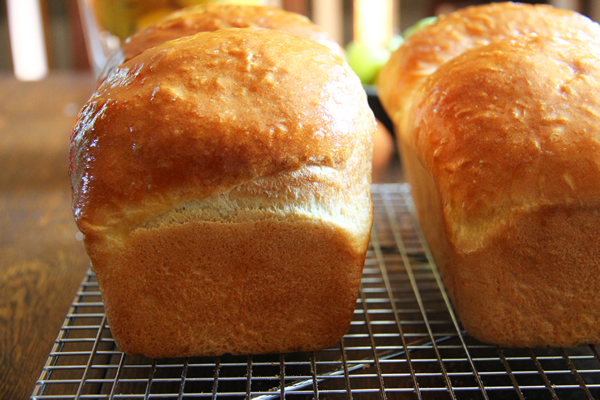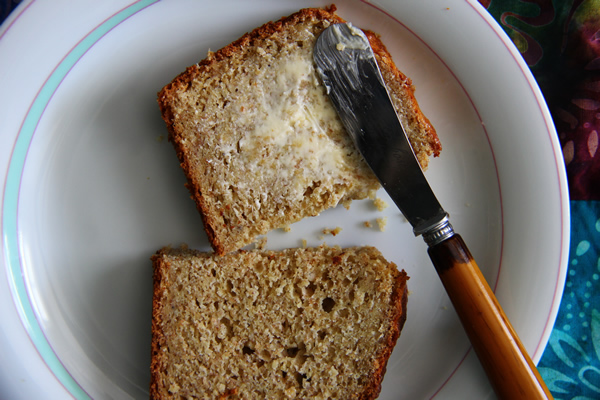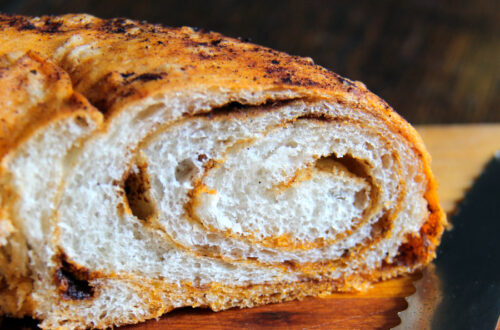Baking hobbyists like to get their kicks at the King Arthur Baking Company. If you’ve seen their mail-order catalog, you know it peddles baking porn at its most seductive. Just looking at those specialty flours, secret ingredients, shiny pans and professional gadgets makes my heart go pit-a-pat.
And then there are the online recipes. More than 500 breads plus tons of cakes, cookies and pastries—everything from serious sourdoughs to fake Twinkies.
King Arthur used this recipe for many years as a kind of gateway drug to bread baking. Milk-enriched, it has the soft, pillowy texture you’ll find in the trendy Japanese milk bread, but without all the fuss. Two balls of dough for each loaf make a lovely shape that pulls apart so you can eat a half and freeze the rest to keep it fresh.
And it comes from “Mr. King Arthur” himself, Bert Porter.
How Bert Brought Bread Baking Home
Affable and unassuming, Bert was King Arthur’s spokesperson in the 1960s and 70s. In 1972 I had the pleasure of booking him on local talk shows across New England. His dry sense of humor and folksy manner turned bread baking into entertainment. Audiences ate it up.
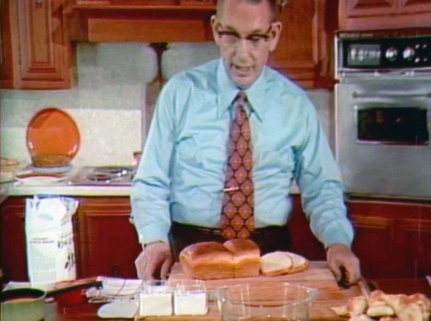
He earned the nickname Mr. King Arthur, but he was more than just the Boston-accented voice of the company. He was also the marketing genius who helped turn King Arthur into the brand for bread-bakers.
Bert started out as a King Arthur salesman in 1946, and rose to vice president in the 60s. At that time, the company sold mostly to bakeries. Retail sales were in a slump. Bert needed to get more homemakers buying King Arthur flour.
Bert learned from market research that of all the things homemakers baked, they took the most pride in baking bread. And since dry yeast was replacing unreliable and messy yeast cakes, wasn’t it time for homemade bread to stage a comeback?
Other flour companies processed out varying amounts of gluten. Lower gluten is fine for baking cakes and cookies, but if you want bread to rise high and have a great texture, you want to keep that stretchy protein. King Arthur all-purpose flour had more gluten than any other brand.
So Bert upped the ante and increased the gluten, claiming that King Arthur all-purpose flour was “best for baking bread.”
At this point, Bert—who never had any formal culinary training—realized he’d better learn how to bake bread. Fortunately, his Swedish wife, Ruth—an excellent baker—taught him so well that he took his bread-baking show on the road.
Bert the baker latched onto a simple yet delicious sandwich bread recipe, his key to selling homemakers on the joys and rewards of bread baking. And this is it.
Five-Star Favorite
The King Arthur Flour 200th Anniversary Cookbook calls this “‘Bert Porter’s ‘Naturally Great Loaf of Bread.’” It appeared on the company’s bags of all-purpose flour in the 1970s and early 80s. King Arthur’s website renamed it “Our Favorite Big-Batch Sandwich Bread,” where it boasts unanimous 5-star reviews.
As much as we enjoy our KitchenAid mixer, we prefer Bert’s method for this recipe. Use a portable electric mixer (or vigorously beat by hand) to create a thin batter with some flour, then add the rest of the flour and knead by hand. The dough is a delight to handle, and in only a few minutes it comes to life into a smooth, elastic, springy ball. It’s relaxing and fun.
This is a baking secret straight from Mr. King Arthur. And to see the master himself, watch his short 1964 film, “Baking Your Own Bread: King Arthur Flour.”
Bert Porter’s Easy, Fluffy, Fabulous Sandwich Bread
Makes 3 loaves using 8 ½ x 4 ½-inch pans
- 1 (5⅓ ounce) can evaporated milk*
- 2 cups water
- ⅓ cup vegetable oil, melted butter or margarine
- ¼ cup honey
- 2 tablespoons SAF Instant Yeast, or Red Star Quick-Rise Yeast
- 7½ – 8 cups King Arthur All-Purpose Unbleached Flour**
- 1 tablespoon salt
- Butter for glazing (optional)
* If you don’t have evaporated milk, substitute ¾ cup nonfat dry milk and increase water to 2 ⅝ cups.
** Use 2 cups King Arthur Bread Flour and the rest unbleached flour for even more gluten.
- Mix water, evaporated milk (or nonfat dry milk), oil or melted butter or margarine and heat to lukewarm in a large mixing bowl in the microwave.
- Add honey, yeast, 2 cups of flour, and salt.
- Beat two minutes with an electric mixer or vigorously by hand. Using a large wooden spoon or silicone spatula, stir mixture, gradually adding more flour until the dough pulls away from the sides of the bowl.
- Knead about 7 or 8 minutes on a lightly floured surface until the dough gets smooth and elastic. Form it into a ball, and place in a large, lightly oiled bowl, turning the dough to oil the top.
- Cover lightly with plastic wrap and let rise about 1-1½ hours, or until doubled in bulk.
- Punch down the dough and divide into 6 equal pieces. We find that each piece weighs just a little shy of 300 grams.
- Form each piece into a ball, stretching the outside around and to the bottom so the surface is taut. Place two balls beside each other in each of three greased 8½ x 4½ x-inch pans.
- Cover lightly with plastic wrap and let rise until double. This may take 45 minutes or less, so watch that they don’t overrise.
- In the meantime, preheat oven to 375°.
- Uncover and bake 25-35 minutes until an instant thermometer reads 190° in the middle of the highest point. Turn bread out of the pans. Loaves should sound hollow when tapped on the bottom.
- Place loaves on cooling racks. Optional: Rub butter on top to form a glaze and soften the crust. When cool, break loaves in half to individually freeze, if desired, and thaw for bread that tastes fresh-baked.
Sources for this article include:
The King Arthur Flour 200th Anniversary Cookbook by Brinna Sands, 1992 edition
“Discovering the secrets of home-baked bread,” Christian Science Monitor, February 4, 1980
Bertram E. Porter Obituary, The Enterprise, November 3, 2009
Also see “King Arthur Flour Chewy Whole Wheat Brownies: The Lost Recipe”

